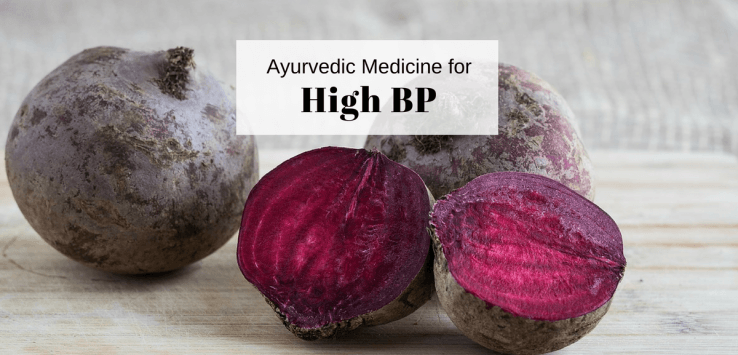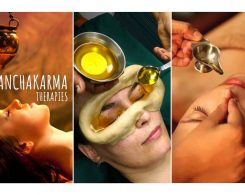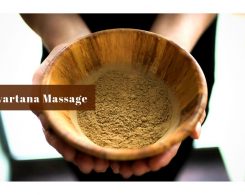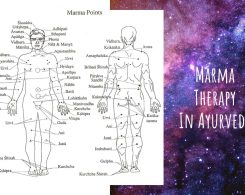- 3Shares
- 1. Triphala
- 2. Garlic
- 3. Ashwagandha
- 3. Beetroot
- 4. Food with Potassium, Calcium, Magnesium, and Omega-3Â
High blood pressure a.k.a hypertension is quite a serious issue that can lead to strokes, coronary heart disease, internal bleeding, heart failure, brain diseases like dementia, and kidney damage too. Luckily, it can be controlled with a combination of medication, healthy food, and lifestyle changes. Natural ingredients like herbs, fruits, and vegetables have powerful medicinal properties and so, they work as effective Ayurvedic medicine for high blood pressure. Here’s a look at some of them.
What Causes High Blood Pressure?
Many things – genetics, an unhealthy diet and lifestyle, quite commonly stress, impaired digestion that leads to accumulation of toxins (ama) in the body, obesity, and smoking.
Ayurvedic Medicine for High Blood Pressure
1. Triphala
Triphala is an excellent medicine that can be used in Ayurvedic treatment for high blood pressure. It comprises of three herbs: Indian gooseberry, terminalia chebula, and terminalia bellica. It has a deeply rejuvenating effect on the body and balances all the three doshas, namely Vata, Pitta, and Kapha. This medicine causes a drop in serum cholesterol, regulates the circulation of blood, fights inflammation, helps reduce weight, and goes a long way in controlling blood pressure.
2. Garlic
Garlic is one of the most popular Ayurvedic medicines for high blood pressure. Studies confirm that the allicin present in garlic can reduce hypertension by soothing the arteries as well as causing a drop in systolic blood pressure. For those who don’t know, systolic blood pressure is the pressure at which your heart beats when it pumps blood to the rest of the body. Please talk to your doctor about whether garlic is safe for you and in what amounts you need to take it.
3. Ashwagandha
Ashwagandha is quite an effective Ayurvedic medicine for high blood pressure and is heavily researched. It can lower blood pressure, improve blood circulation, and reduce inflammation in the body. It promotes strength and immunity too. And this herb has been found be a powerful adaptogenic, meaning it can significantly increase your capacity to handle physical as well as mental stress – a very common cause of hypertension these days.
3. Beetroot
These deep red ground veggies are great for the cardiovascular system. Researchers have found that their heart-friendly properties come from its high nitrate content. The nitrate in beetroots widens your blood vessels – this helps improve blood circulation to your organs as well as your heart. According to studies, a glass of beetroot juice a day can help keep blood pressure in control as well as prevent hypertension altogether.
4. Food with Potassium, Calcium, Magnesium, and Omega-3
Potassium, calcium and magnesium – these three minerals are vital to maintain healthy blood pressure. So they count as potent Ayurvedic medicine for high blood pressure. Eat white beans, yoghurt, bananas, and leafy greens like kale, spinach and collard greens to meet your daily requirements of these minerals. Plenty of studies have found that Omega-3 fatty acids can lower blood pressure as well as cholesterol. Overall, they’re great for the heart. So include foods like flaxseeds, walnuts, chia seeds, Brussels sprouts, cauliflower, and hemp oil in your diet.
Quick Diet & Lifestyle Tips
- Avoid foods like pickle, caffeine, alcohol, salt, red meat, pungent spices, canned food (it’s high in sodium!) and unhealthy fats.
- Cook with heart-friendly oils like extra virgin olive oil.
- Be active – practise yoga. Walking is great for you.
- Calm your mind with things like meditation, qigong, soothing music, and aromatherapy.
- Eat and sleep at regular timings.
- Keep a tab on your blood pressure. See your doctor as often as needed.
- Remember to listen to your body and get enough rest!
- Commit to leading a healthy lifestyle.
Note:
This article is not medical advise and is intended only to inform. For your own safety, please consult your doctor before using any of the remedies.






Leave a Reply